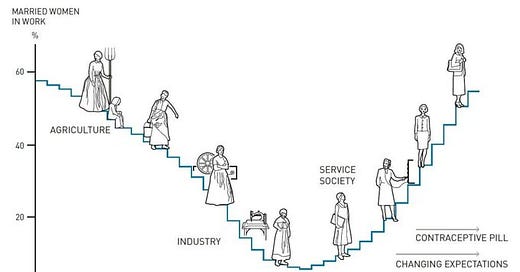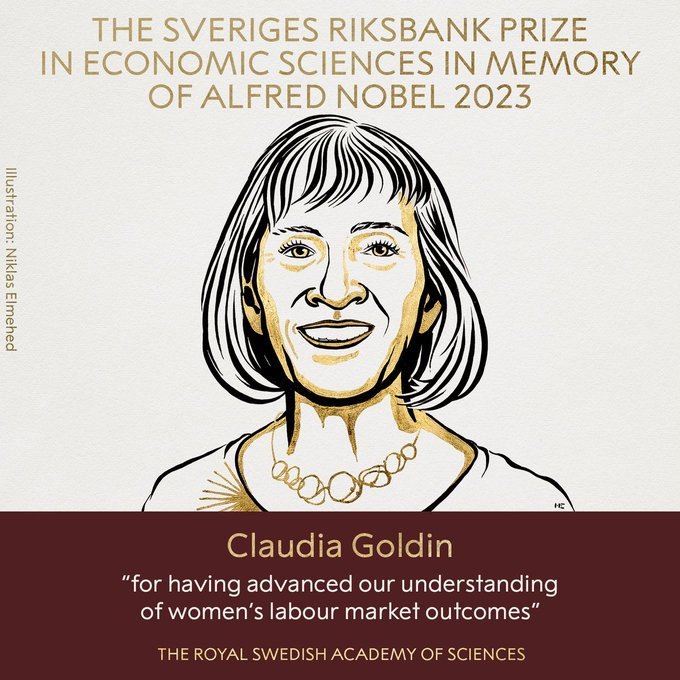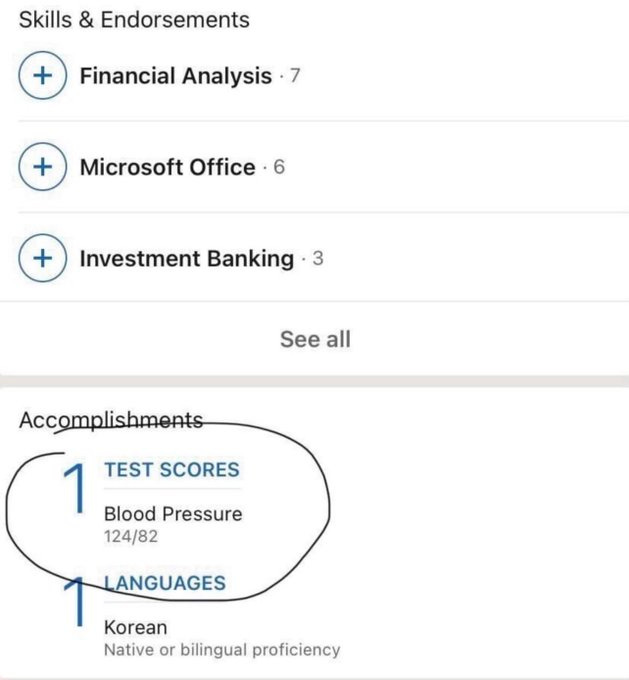Building a Collage of Evidence To Boost Workforce Serendipity and Innovation
#WF50 Inspiration from a Nobel Prize Winner, Why Women Won, the Power of the Pill to Change Work, and Ressources Humaines at Unleash Paris
This week some insights from a Nobel Prize Winner looking back at the history of womens’ participation in the US Workforce, some ideas on cultivating workforce serendipity, and some organisational updates from Novartis, Ikea, Nokia, Lego, and Spotify in Paris.
Why Women Won - Nobel Prize Winner Claudia Goldin
Professor Claudia Goldin was the first woman to be granted tenure at Harvard’s economics department, and is now the third woman to have won the subject’s Nobel prize, "for having advanced our understanding of women’s labour market outcomes".
For those interested in the future of work, looking back at historical cycles, and social transitions through a labour economics lens can be very fruitful.
Over her career, Golding has been like an economic detective smashing myths about work. For example, there was a belief that female participation in the workforce followed an upward trend over 200 years, however through detailed data-gathering she found it followed more of a U-shaped curve, as the graph for this article illustrates. When thinking about future workforce changes, then medical and social changes shape how we work.
The Power of the Pill
An illustration of Goldin’s work, is the impact of the contraceptive pill, which was approved in the US in 1960. The pill allowed women to have a greater say over when and whether to have children - but what impact did it have on the workforce? Their research showed that between 1967 and 1979 the share of 20- and 21-year-old women who expected to be employed at the age of 35 jumped from 35% to 80%. This 5-minute video is an excellent overview of the impact of the pill on women in the workforce.
There are no specific recommendations from Goldin’s work on how to shape a better future of work, however, her methods and insights will form the bedrock of future policy improvements. “Why Women Won” was released on the same day as the Nobel Prize, and details 155 critical moments in women’s rights history from 1905 to 2023. For more perspective on Goldin’s work, Brian Albrecht’s account below is useful.
How to Increase Workforce Serendipity

Claudia Golding explains that she presents a "collage of evidence" with her work on gender and work. It is hard to find sharp and easy conclusions to workforce challenges, given the variation in countries, situations, and workers.
In the context of hybrid working, and industry reshuffling, a big question for organisational leaders, is how to increase workforce innovation and productivity?
Bringing workers back to the office is not enough to increase innovation.
The debate about where people work has become political, personal, and clumsily bangs into the finer points of work design.
If a business function is tasked with innovation of any kind, then there is a view that being co-located fosters serendipity. This is a hope that a chance encounter in the smokers section of the car-park will stimulate the next great product.
I led a digital transformation team for a large British retailer. We had service designers and technical analysts. With an office move, there was a hot debate about whether the desk layout should mingle the teams, or keep in their functional teams. At the time I was ambivalent because I felt co-location would be nice, might help team-working a bit, but any real results would come from a more muscular approach to designing the actual work.
What is the evidence that co-location impacts the sharing of ideas, or work productivity?
A study by Roche, Oettl, and Catalini in 2022, researched the experiences of 251 start-up teams in co-working spaces. They looked for what they called “knowledge spillovers” with how likely a team will be to adopt some new web technology. They observed an positive effect for startups within close proximity of each other and this quickly decays when they are more than 20 meters apart.
Bringing workers back to the office is not enough to increase innovation, a much more proactive approach to work-design is required.
In his article, Michael Arena gives some tips for increasing serendipity :
Create a physical environment that encourages cross-team collaboration and spontaneous interactions. Design offices with open spaces, common areas, and collaboration zones, where employees from different departments can come together, exchange ideas, and foster innovation.
Emphasize the formation of cross-discipline teams which allows organizations to tap into the diverse skills and perspectives of their employees. These interdisciplinary teams can tackle complex projects that benefit from a wide range of expertise, increasing the likelihood of serendipitous breakthroughs.
Organizations should be open to experimentation and adaptation. Recognizing that what works in one context may not work in another, and be willing to adjust strategies based on feedback and evolving needs. A culture of continuous improvement and innovation is essential for optimizing the serendipity-building process.
Matt Clancy considers the research on innovation in the office in this thorough article for those that want to delve a bit deeper.
My advice is be an organisational detective and build up your own ‘collage of evidence’ for increasing innovation and productivity in your organisation. I would also echo Michael Arena’s point that organisations need to be open to experimentation and adaptation.
Do you have examples of where your organisation has attempted to improve serendipity? Share in the comments, or hit reply (for subscribers).
Ressources Humaines - How Large Employers are developing Leadership Strategies and Using Their Brand to Attract Workers
I am excited to attend Unleash World in Paris next week, an event I first went to in 2014. I haven’t been since 2019 (can’t remember why) so looking forward to reconvening with old friends.
I have learnt a lot over the years by listening how employers respond to workforce challenges. This year there will be speakers from companies such as Novartis, Bayer, Lego, Spotify and many others.
How are employers using employer branding to attract diverse talent pools?
In one session I am moderating, I will be asking Claudio Valente, Global Head of Talent Management, Ingka IKEA, and Laura Hingel, Global Head of Talent Acquisition and Employer Branding, Parfums Christian Dior. These are two strong consumer brands in their sectors.
How is leadership changing in the context of bleeping screens, remote working and algorithmic team support?
In another session, I will be speaking about leadership growth strategies with Francisco Davila, CPO, Selectra, Rosaria Bonafacio, Vice President and Head of People Partner Customer Experience, Nokia, and, Afolabi Sonaike, Head of Leadership & Teams, Lloyds Banking Group.
An Invitation to Paris for Workforce Futurists
I would love to offer subscribers a couple of days in the most romantic city in the World, however this is how rumours start…
What I can offer is a 15% discount for HR practitioners or Free tickets to the Expo
If you are in Paris next week be sure to find me to say salut!
Webinar - How John Deere Uses Collaborative Automation to Manage Workforce Resilience
In the spirit of learning how global organisations are responding to workforce challenges, I am speaking with executives from KellyOCG and John Deere.
How does a company with over 82,000 employees like John Deere - which makes tractors, mowers and dozers, use collaborative software to manage workforce resilience?
You will also learn about the latest trends and strategies in workforce resilience from a groundbreaking research study involving 5,700 professionals.
I will discussing with Amy Bouque, CHRO, KellyOCG, and from John Deere, Gabrielle Durand, External Workforce Management, and Julie Harberts, Recruiting Manager.
The webinar is on 24th October and you can sign-up below.
And Finally - Key Accomplishments As Seen on LinkedIn
If you enjoyed this edition of Workforce Futurist, please consider sharing with your network.









